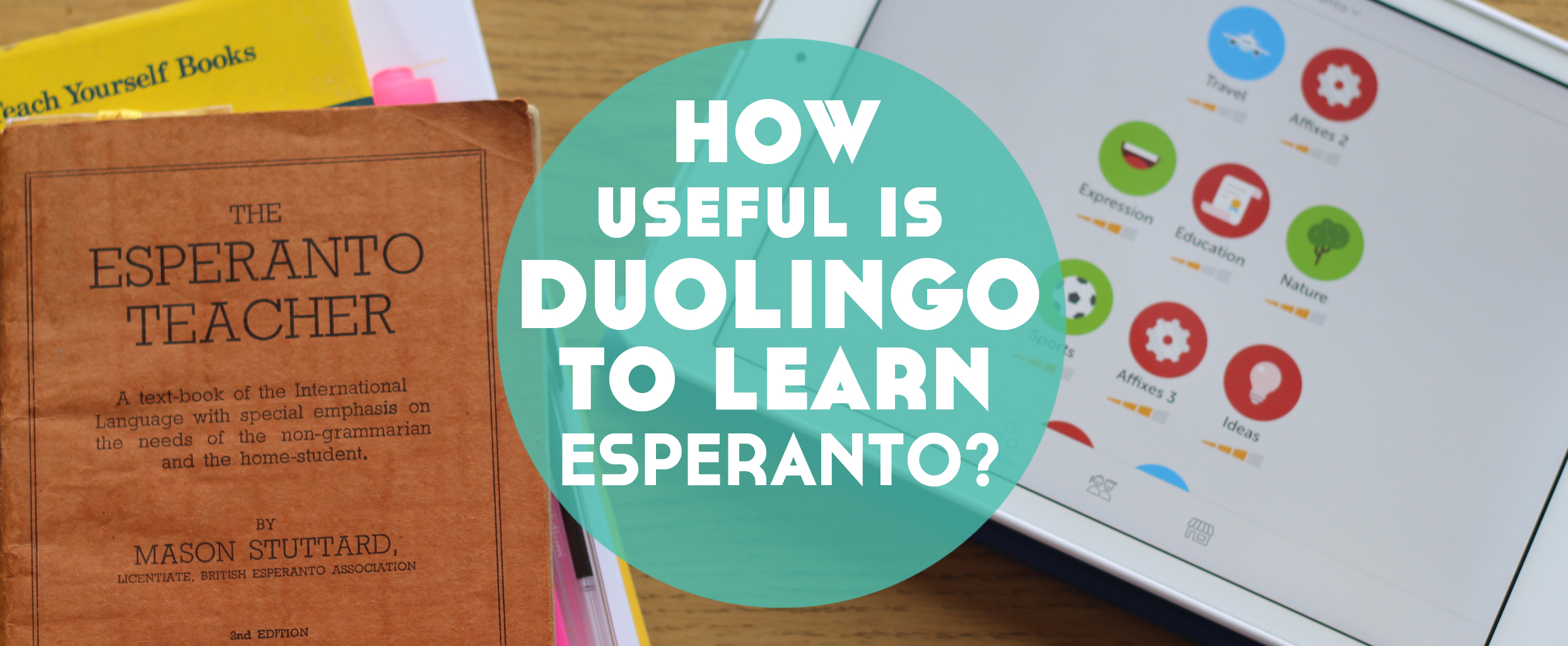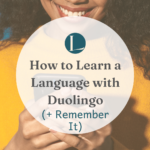June 20th, 2016
How Useful is Duolingo to Learn Esperanto?
If you follow me on Instagram or Snapchat, you will have no doubt seen my recent studies involving Esperanto. I have 3 things in my life I’m using to help me learn: a small brown book from the 1950s, a dictionary that’s almost as old, and Duolingo. But how useful is Duolingo to learn Esperanto?
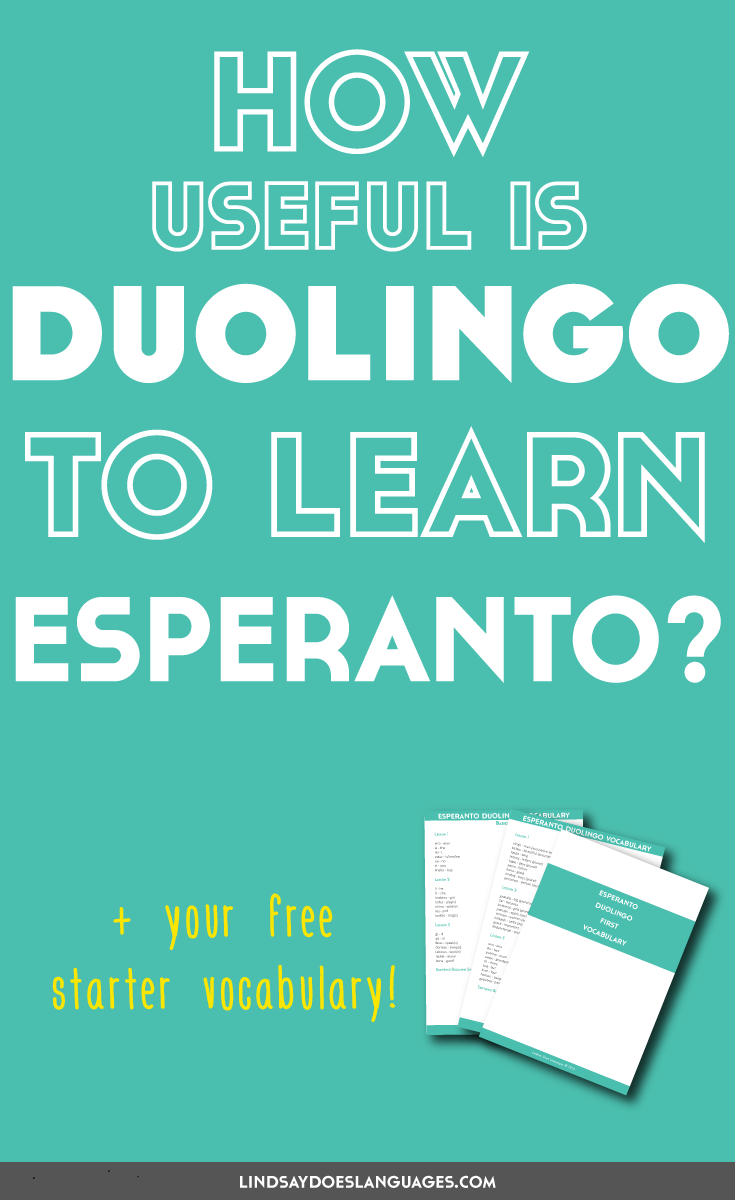
Before we begin, let me give you a little background as to my relationship with Esperanto.
I didn’t know about Esperanto until about 2 and a half, maybe 3, years ago. The idea of a constructed language that had been as successful as Esperanto had was interesting, but there were plenty of other languages that were more interesting to me. And besides, who would I use Esperanto with anyway?
Shortly before the Polyglot Gathering in Berlin in 2015, I met Chuck Smith online, one of the key players in the creation of the Esperanto course on Duolingo.
Here’s a photo of me and Chuck at the Polyglot Gathering 2016. My face is blurry because I’m so starstruck to be meeting the guy on the magazine.
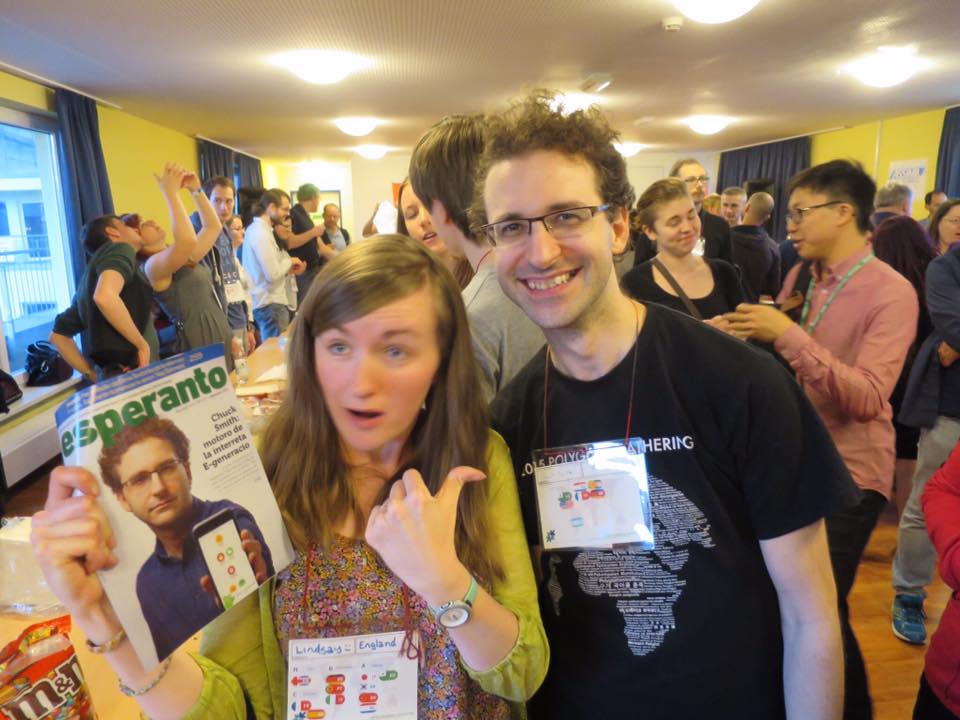
I was really intrigued by his love for the language and by this point I knew that I could probably learn it quite easily, but I was still polishing off my language degree, so didn’t have much time to devote to learning new languages.
And I’ll be honest, I still didn’t really want to.
But it wasn’t long before the course was added on Duolingo and the possibility to learn Esperanto easily suddenly became more of a reality.
The following summer, I picked up these books for £1 from a car boot sale.
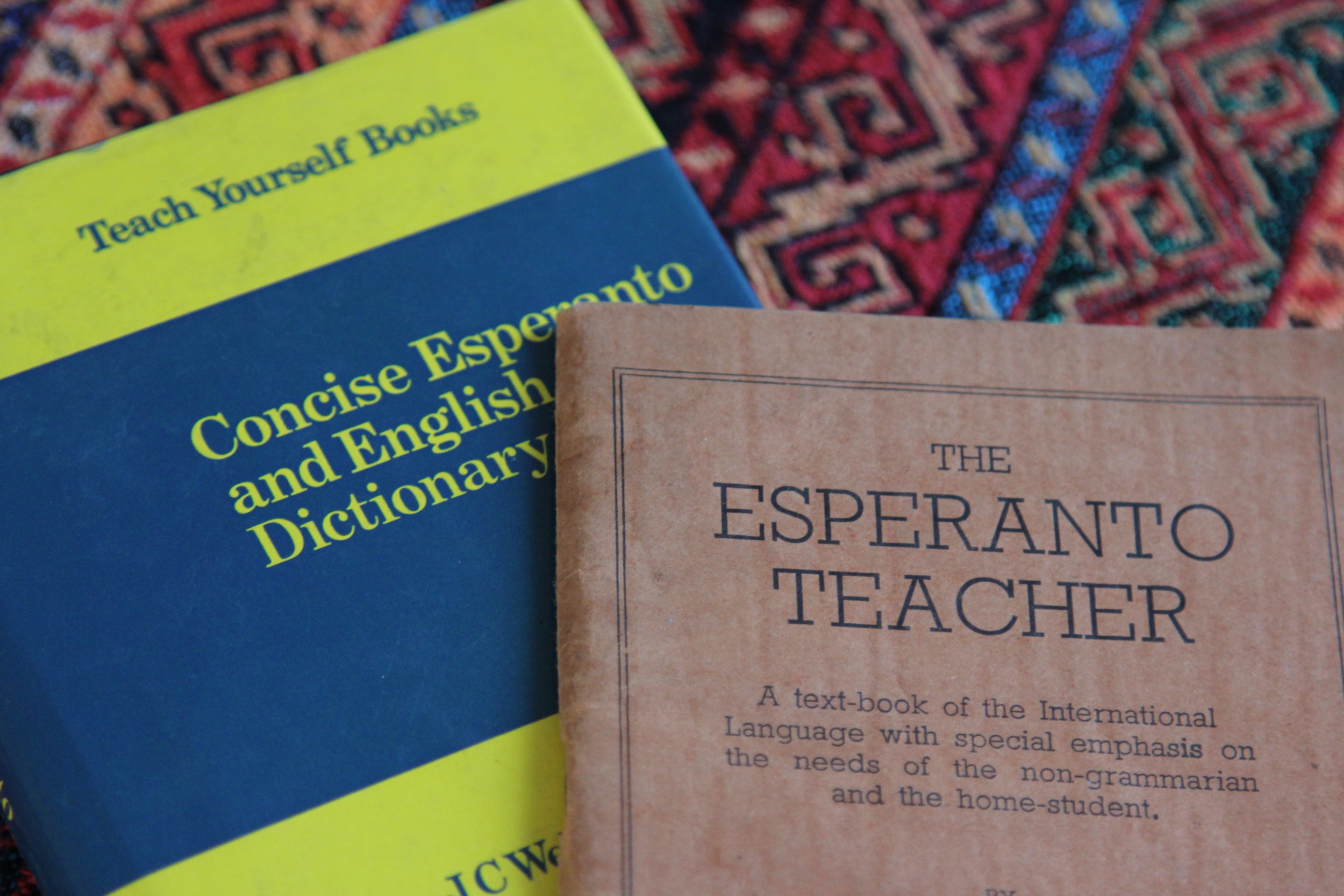
So I knew it had to happen someday soon. And now it has. Yay!
Why Duolingo?
I’d never had the chance to really use Duolingo fully and engage with a complete course. Yet, I was always hearing new students say they’re using it, seeing it on the demo phones in the Apple Store, and waiting for Asian languages to launch (although Vietnamese is now in Beta and Hindi, Indonesian and Korean being created.)
Some people love Duolingo and others…not so much. You could say in that sense it’s the modern day Rosetta Stone. The Marmite of language learning.
But I’m not one to judge without a fair trial, so to speak.
And to be really fair, I decided to try Duolingo pretty much on its own. The only other thing I have used and that has given me any exposure to Esperanto is that little brown book. I haven’t really used the dictionary yet.
What’s it like?
The interface is cute. The app is simple to use. And the topics are seemingly well-structured and laid out. First impressions count for a lot, and here Duolingo scores highly.
I’m sure this next bit varies slightly from language to language but with Esperanto, there are 44 ‘Skills’ each containing 3 to 10 lessons. Each lesson takes just minutes to complete, which I think contributes to Duolingo’s popularity with our busy, busy modern lives.
When you first open the app, you only have the option to do the first lesson or two or test out the first 7 Skills, meaning that there’s a) no chance of getting antsy and skipping ahead, and b) a very rigid order of study that has been decided for you.
I think I like this feature. If I’m using Memrise for example, it’s very easy to get distracted half way through a course by another that seems more useful or relevant. It definitely helps to keep your focus when you open the app (or the website).
Each lesson then shows you a word to translate, sometimes with an image, sometimes individually, sometimes in a sentence, sometimes with audio, sometimes without. So there’s a little variety.
What do you learn?
The lessons start with the obvious and necessary content and they’re not afraid to integrate grammar from the start, which I really like. For example, the first 7 Skills in Esperanto are Basics 1, Basics 2, Phrases, Accusative, Languages, Colours, and Plurals.
I have mixed feelings about the content of the lessons. I quite like the order, and, side note, I LOVE Esperanto verbs! Past and future in the same lesson?! Yes please.
But as you go on, some of the content seems slightly random for Esperanto. For example, when am I likely to need to order in a restaurant in Esperanto?
That said, I can see why it’s there. Who want’s to be able to talk about Nature or Education in a language before they can ask for a coffee? I get it.
Am I fluent in Esperanto?
I decided to experiment and use Duolingo in a way that I’m sure many of its 120 million users do: use nothing else.
Now let me get one thing straight. That’s not a criticism against anyone who uses Duolingo and Duolingo alone to learn a language.
Duolingo brings language learning to so many people who may not otherwise know where to start or have the money or the resources to do so. I love that.
However, of course we know, using one resource is rarely a way to fully-rounded fluency, yet with so many fans of Duolingo, it was something I wanted to test as best as possible.
I can read Esperanto and I can more or less figure most stuff out. But with my knowledge of Romance languages that I had previously to using Duolingo, I wonder how much I could have read before.
I can understand spoken Esperanto to some extent. But again, I attended talks in Esperanto both this year and last year at the Polyglot Gathering and was surprised both times by how much I understood, again, in my pre-Duolingo days.
I can write in the language. Without the help of my dictionary, grammar books or even Duolingo, I wrote this:
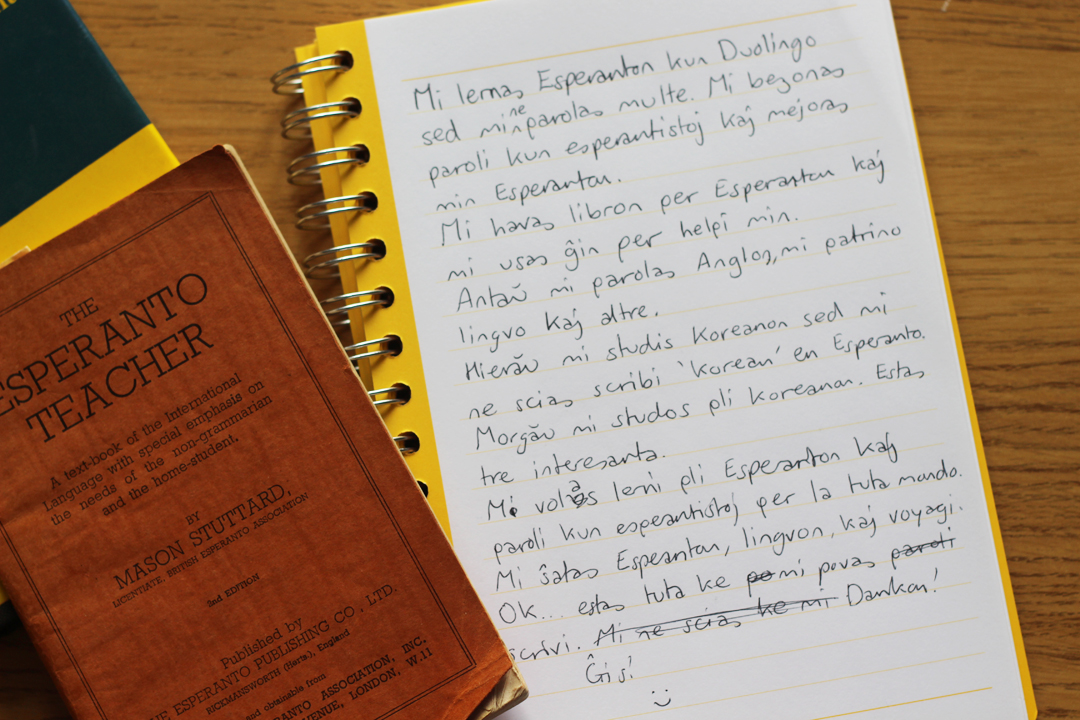
Beautiful. I’m pretty sure I couldn’t have done that before.
But how about the mother of all skills? The one everyone craves to be pro at from day one? Speaking.
With a 38 day streak on Duolingo Esperanto and with very very little former speaking practise, I present to you taken directly from Snapchat, my spontaneously spoken Esperanto.
It’s Snapchat, so expect filters and a little Korean at the start. (You can follow me on Snapchat at ldlanguages for more strawberries and language mistakes)
As you can see, it’s not too bad but not great.
Did it help?
The thing that I knew at the start of this little experiment was proven true: successful language learning doesn’t come from one source. It doesn’t come from one book, app, or tool.
Just using Duolingo will not make you fluent in a language. But don’t let that be a reason not to use it. Don’t dismiss it.
Duolingo helped me to process the early stages of Esperanto with very little “study”, in the typical sense of the word.
Like I said at the start of this post, it’s cute, simple to use, and well-structured. And there’s no reason not to use it alongside other resources and methods and tools.
In fact, now I’ve got my mega streak, I’m going to keep using Duolingo to learn a little Turkish and Russian too. Woohoo!

